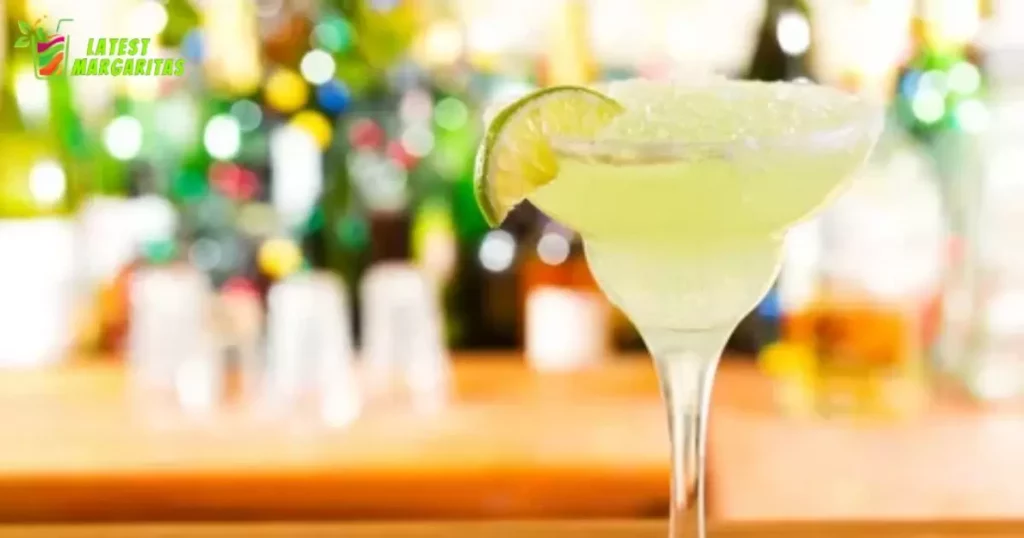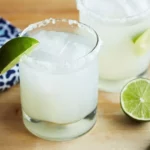Margaritas are one of the most popular cocktails in the world, known for their refreshing and zesty flavors. Whether you’re a seasoned margarita enthusiast or a newcomer to the cocktail scene, understanding what margaritas taste like is essential. In this comprehensive guide, we will delve into the ingredients that compose this classic drink, the intricate balance of sweet, sour, and alcoholic notes that make up its taste profile, the various flavors and variations you can explore, and the factors that influence the final taste.
You’ll have a deeper appreciation for the art of crafting and savoring the perfect margarita.Indulging in leisurely relaxation on a pristine white sand beach, while savoring the cool, refreshing taste of margaritas, encapsulates the quintessential essence of a perfect summer getaway on an island.
The sand on Margarita Island boasts a distinctive orange hue. Playa El Agua stands as the island’s most renowned beach, boasting approximately 4 kilometers of pristine white sands, swaying palm trees, azure waters, and gentle waves.
Margarita Ingredients
Tequila
Tequila, the primary spirit in a margarita, plays a fundamental role in defining its taste. Margaritas are typically made with either blanco or reposado tequila. Blanco tequila offers a crisp and earthy flavor with a stronger agave presence, while reposado is aged and smoother. This choice of tequila impacts the margarita’s overall taste, with blanco providing a more agave-forward and slightly harsher note, and reposado offering a mellow, oakier touch.
Triple Sec or Orange Liqueur
The choice of orange liqueur, such as Triple Sec or Cointreau, significantly influences the sweetness and citrusy notes of your margarita. Triple Sec tends to be sweeter and offers a pronounced orange flavor, while Cointreau is drier and presents a more balanced citrus profile. The selection between the two can shift your margarita’s taste from sweeter and fruitier to a crisper, drier, and more nuanced profile.
Lime Juice
Lime juice provides the sour element in a margarita. The taste of freshly squeezed lime juice is essential for achieving the vibrant and zesty quality that defines a great margarita. It contributes a bright, tangy, and citrusy character that balances the sweetness of the orange liqueur and the depth of the tequila.
Ice
Ice serves both a functional and flavor-enhancing role in a margarita. It chills and dilutes the cocktail, making it more refreshing, but it also impacts the overall taste. Melting ice can subtly alter the ratios of the ingredients as it mingles, affecting the strength and perceived sweetness of the drink.
Optional Sweeteners or Flavors
While not a standard ingredient in the classic margarita, sweeteners or flavorings can be added to customize the taste. Agave nectar, honey, or simple syrup can be used to adjust the sweetness. Additionally, you can experiment with flavoring agents like fresh fruit purees, herbs, or spices to create unique and delightful variations of the margarita.
To give you a sense of the various types of tequila used in margaritas and their flavor profiles, here’s a table summarizing the characteristics of blanco and reposado tequila:
| Tequila Type | Flavor Profile |
| Blanco | Crisp, Agave-forward, Earthy, Slightly Harsher |
| Reposado | Mellow, Oaky, Smooth, Balanced |
The Taste Profile of Margaritas
Sweetness
Margaritas strike a balance between sweet and sour, with sweetness primarily derived from the orange liqueur and any optional sweeteners added. The level of sweetness can be adjusted to your preference, ranging from dry and tart to moderately sweet and fruity.
Sourness
The sourness in a margarita comes from the freshly squeezed lime juice, which provides a bright and tangy character. The intensity of the sourness can be adjusted by varying the amount of lime juice used.
Citrusy Notes
Margaritas are celebrated for their lively citrusy notes, mainly attributed to the combination of fresh lime juice and orange liqueur. These elements create a refreshing, zesty, and aromatic quality that defines the drink.
Alcoholic Kick
Tequila, as the base spirit, contributes a noticeable alcoholic kick to margaritas. The type of tequila, its quality, and the proportion used all affect the strength of this kick. Some may prefer a milder alcoholic presence, while others seek a bolder experience.
The Role of Salt
One unique aspect of margaritas is the option to rim the glass with salt. The salted rim doesn’t directly impact the drink’s taste, but it provides a contrasting and enhancing element. The salt helps cut through the sweetness and sourness, creating a well-rounded taste experience.
Variations in Margarita Flavors

Classic Margarita
The classic margarita, known for its simplicity and balance, offers a template for the drink’s original taste. It’s a delightful blend of tequila, orange liqueur, and lime juice, with or without a salted rim. This classic version sets the benchmark for exploring other margarita flavors.
Fruit-Flavored Margaritas
One of the most exciting aspects of margaritas is the ability to infuse them with various fruit flavors. By incorporating fresh fruit purees, such as strawberry, mango, or watermelon, you can create fruity margaritas with unique and tantalizing taste profiles.
Spicy Margaritas
For those who enjoy a kick of heat, spicy margaritas are a popular choice. Infusing the drink with jalapeño or other chili peppers adds a spicy dimension that complements the sweetness and sourness, creating a harmonious and fiery taste.
Frozen vs On the Rocks
The texture and temperature of a margarita can influence its taste. Frozen margaritas are blended with ice, resulting in a slushy consistency that can be cooler and more diluted. On the rocks margaritas, made by shaking and straining over ice, tend to be stronger and more concentrated in flavor.
In the table below, we compare the characteristics of classic margaritas, fruit-flavored margaritas, and spicy margaritas to help you explore different flavor options.
| Margarita Type | Flavor Profile |
| Classic Margarita | Balanced, Sweet and Sour |
| Fruit-Flavored Margarita | Fruity, Sweet, and Vibrant |
| Spicy Margarita | Spicy, Sweet and Tangy |
Factors Influencing Margarita Taste
Quality of Ingredients
The quality of your ingredients, particularly the tequila, orange liqueur, and lime juice, plays a crucial role in determining the overall taste of your margarita. Using high-quality, fresh, and authentic ingredients will result in a superior and more enjoyable drink.
Proportions and Ratios
The proportions of tequila, orange liqueur, and lime juice can be adjusted to fine-tune the taste to your liking. Experimenting with different ratios allows you to find the perfect balance between sweet, sour, and alcoholic notes.
Personal Preferences
Your personal taste preferences are the most influential factor in how a margarita tastes to you. Some enjoy sweeter margaritas with a pronounced fruitiness, while others prefer a drier, more tequila-forward experience. The beauty of margaritas is their adaptability to suit your unique palate.
Serving and Presentation
Glassware
The choice of glassware can influence the drinking experience and presentation of your margarita. While margaritas are commonly served in a wide, stemmed glass called a margarita glass, you can also opt for alternatives like rocks glasses or highball glasses, depending on your preference.
Garnishes
Garnishes add an extra layer of flavor and visual appeal to your margarita. Common garnishes include lime wedges, citrus twists, or fruit slices. These additions can subtly impact the overall taste by releasing aromatic oils into the drink.
Salt Rimmed vs Plain
Whether to rim the glass with salt or not is a matter of personal choice. The salted rim doesn’t change the basic taste of the margarita; however, it does provide a contrast that enhances the overall experience, especially in a margarita pedicure. Some prefer the added dimension of salt, while others enjoy their margarita plain.
FAQs
What is Margarita Island known for?
Margarita Island is known for its beautiful beaches and duty-free shopping.
How do I get to Margarita Island?
You can reach Margarita Island by air or ferry from mainland Venezuela.
What’s the best time to visit?
The best time to visit Margarita Island is during the dry season from November to April.
Are there luxury resorts on the island?
Yes, Margarita Island offers a range of luxury resorts for a comfortable stay.
Conclusion
The taste of margaritas is a harmonious blend of sweet, sour, and citrusy notes, with a distinct tequila kick. This iconic cocktail offers a canvas for endless variations, from fruit-infused and spicy renditions to the classic, perfectly balanced original. The taste of a margarita is subject to personal preferences, the quality of ingredients, and the skill of the mixologist. As you explore the world of margaritas, remember to savor responsibly and enjoy the endless possibilities this beloved cocktail has to offer.





